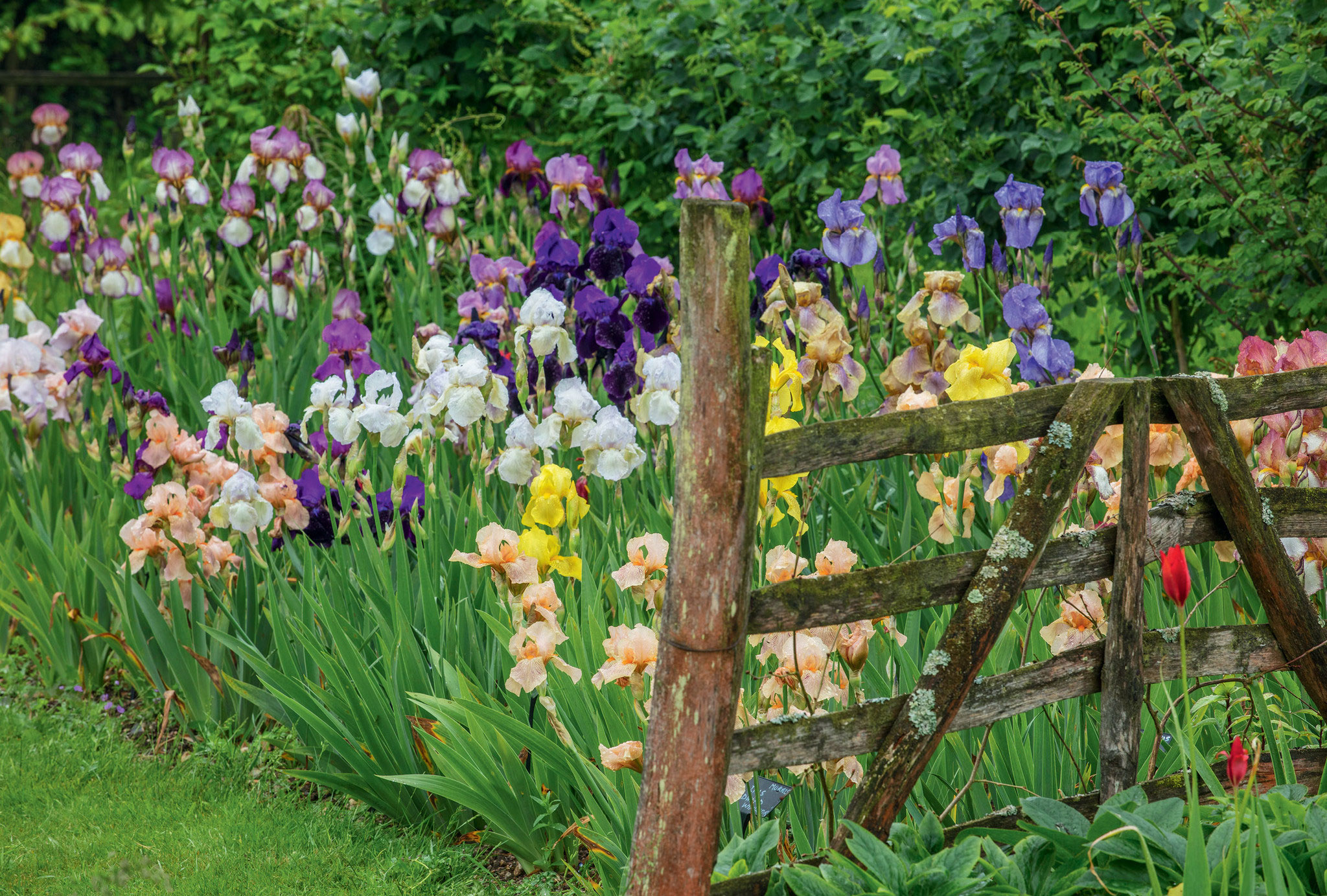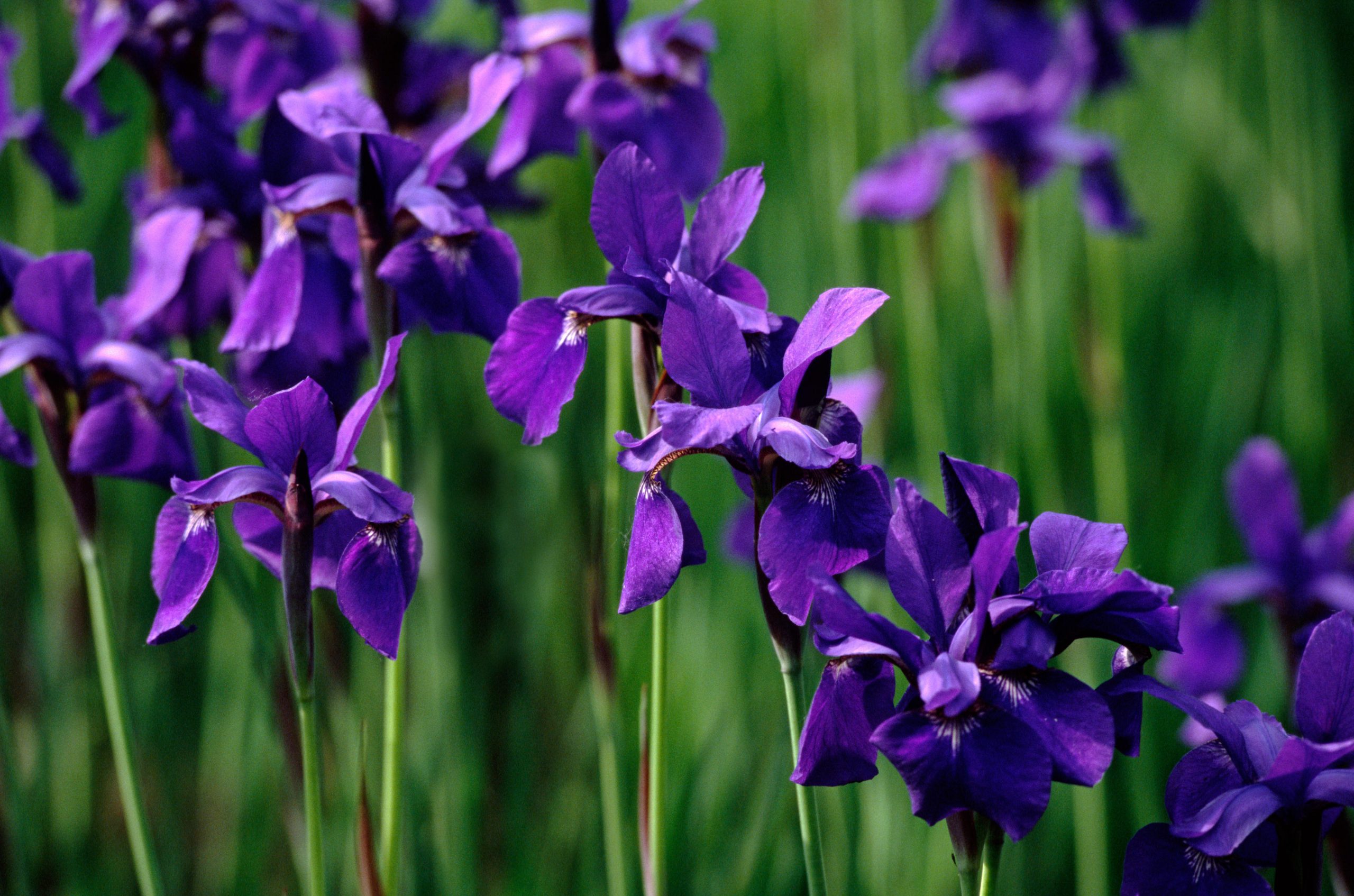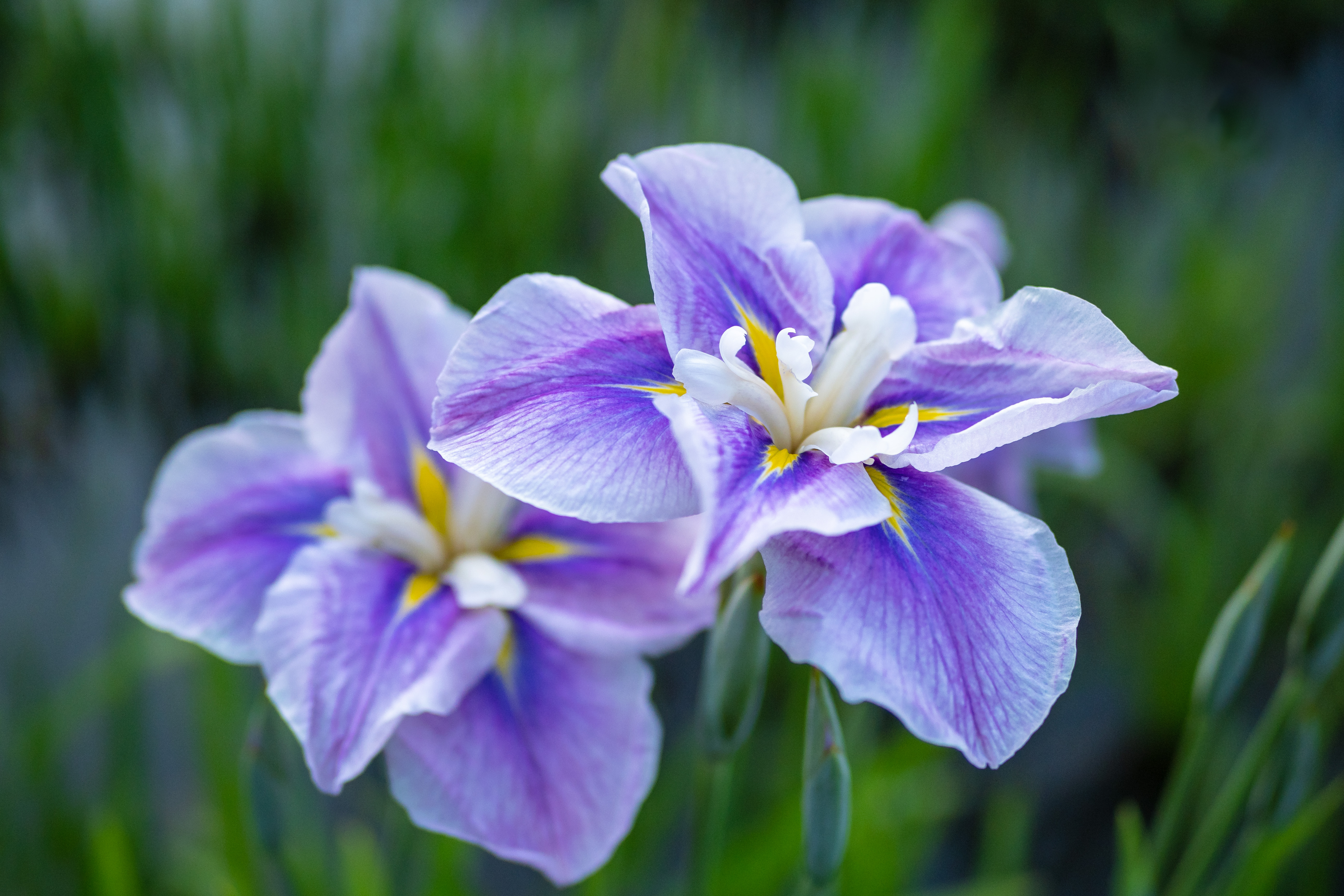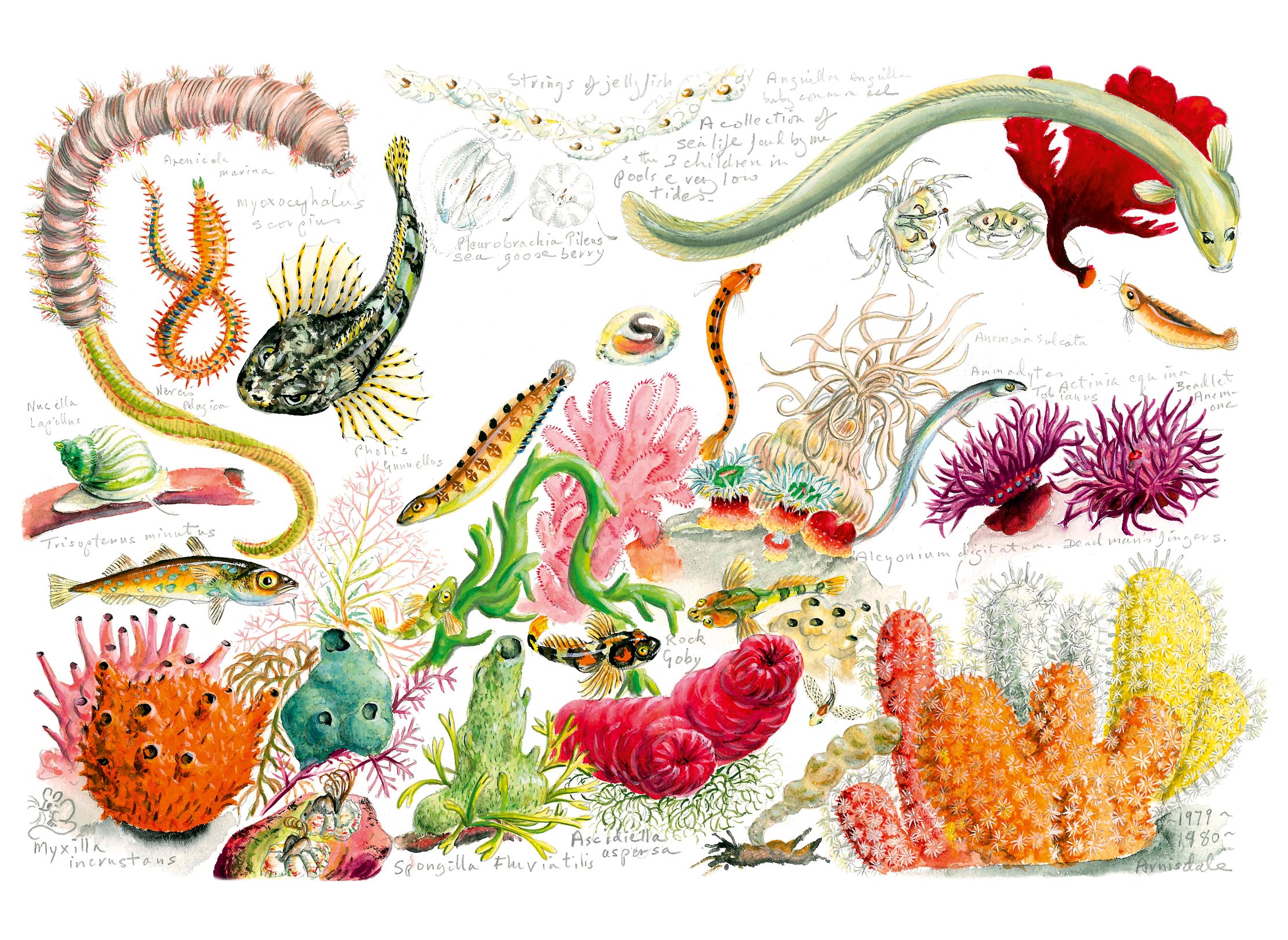Why every garden needs an iris (and why there's an iris for every garden)
Charles Quest-Ritson on the irises to plant, the ones you'll never manage to grow in Britain, and the ones to avoid unless you're happy for them to take over half of your garden.


When King Clovis of the Franks converted to Christianity in AD496, he took the lily as his heraldic symbol. He chose lilies because they were associated with Mary, the mother of Jesus — not that he was a paragon of purity. Nor was he much of a botanist, for he modelled his lily upon the common yellow iris that grows in damp ditches all over Europe and beyond. We know it as the fleur-de-lys; botanists call it Iris pseudacorus. For gardeners who prefer common names (not me), it is the yellow flag, the easiest of all irises to grow in British gardens, precisely because it is a native plant. In fact, it’s a thug that fattens up quickly and scatters its seeds where you do not want them. It also comes in pale yellow and pure white and as a form with variegated leaves. Avoid them all, unless you are a devotee of the fashion for rewilding.
But irises have a place in every garden because there are so many of them — some 300 species, even before you start to count the garden hybrids — and because they flourish in such a variety of different conditions. But everyone recognises an iris immediately because of its distinctive shape — three upright petals known as ‘standards’ and three sepals that look like petals because they are coloured, which are known as ‘falls’. Sometimes, the falls have stripes that help visiting insects to find the pollen; ‘bearded’ species also have a line of hairs to give those insects a soft landing.
In Britain, the year begins with Iris unguicularis flowering in January in warm, dry, sunny spots that replicate its east Mediterranean origins. The best ones are palest-blue ‘Walter Butt’ and rich-blue ‘Mary Barnard’ and there are several white-flowered forms, some of which I find more difficult to establish than others. Pick the flowers when still tightly rolled, bring them indoors and they will respond to your heating bills by opening out almost at once and filling the room with sweet scent.

January is the month, too, in which the bright-blue Iris alata opens its flowers all over the hillsides of the western Mediterranean. Don’t try growing it in Britain unless you are very experienced in the cultivation of these so-called Juno irises: most of them come from the Middle East or Central Asia and all are damnably difficult to keep alive in our mild, damp climate. The same is true of the exquisitely beautiful Oncocyclus irises, such as I. susiana and I. iberica, best seen in the wild and then stored in your memory as a paradigm of floral perfection.
Early spring brings the Hermodactyloids — those small, cheerful species, including bright yellow I. danfordiae and true-blue I. reticulata. Buy the bulbs in autumn — they’re not expensive — and enjoy them in February and March, but don’t expect them to come again next year. Like tulips, they are a one-year miracle.
Late into March, the first ‘bearded’ irises start to flower — species such as Iris lutescens, which, despite its name, produces plants with flowers that are either all yellow or all purple. Wander through the scrubby maquis of Provence in France at Easter and you will see both colour forms in fairly equal numbers. A week or so later, the ‘dwarf-bearded hybrids’ start to flower — ‘Knick-Knack’ is perhaps the best known, an easy plant with blue stripes and edges to the elegant white-ish flowers.
When we say ‘irises’ we usually think of the ‘bearded’ sort that flower so elegantly from mid April to early June. These are complex hybrids, the result of more than a century of worldwide breeding that has brought us new colours and larger flowers with broader, wavy standards and falls. In recent years, there has been a revival of interest in the tall bearded irises bred by Sir Cedric Morris before and after the Second World War. Morris’s house at Benton End in Suffolk now belongs to a charitable trust and his iris collection is curated by Cambridge-educated Sarah Cook, who used to be head gardener at Sissinghurst in Kent. Morris’s irises — most of their names are prefixed by ‘Benton’ — herald a predilection for older iris varieties, rather as some people exalt old roses above modern cultivars.
Exquisite houses, the beauty of Nature, and how to get the most from your life, straight to your inbox.
My own iris preferences are firmly with the moderns — and I have now begun to collect the new repeat-flowering forms that are coming out of North America. Their reflowering is unpredictable, but their emergence seems to me a step in the right direction.
The British Iris Society is celebrating its centenary in 2022. Its members and its publications are an endless fount of wisdom. Indeed, Miss Cook is one of its luminaries. Its Chelsea exhibit won a well-deserved Gold medal. The society also promotes all the iris types that I have no space to mention, including the super-hardy Sibiricas and the sumptuous Japanese Ensatas. Its logo is modernist, but still recognisable as a fleur-de-lys — although, doubtless, King Clovis would call it a lily.
Charles Quest-Ritson wrote the RHS Encyclopedia of Roses

Mark Griffiths: The irises that are fit to be the apple of any gardener's eye
Mark Griffiths takes a look at the famed irises of Japan, and how their influence has been felt to Britain

In Focus: The life and times of Mouse Macpherson, a truly extraordinary wildlife artist
Mouse Macpherson kept an eclectic menagerie of pets and wild animals and signed everything, from paintings to cheques, with a
Charles Quest-Ritson is a historian and writer about plants and gardens. His books include The English Garden: A Social History; Gardens of Europe; and Ninfa: The Most Romantic Garden in the World. He is a great enthusiast for roses — he wrote the RHS Encyclopedia of Roses jointly with his wife Brigid and spent five years writing his definitive Climbing Roses of the World (descriptions of 1,6oo varieties!). Food is another passion: he was the first Englishman to qualify as an olive oil taster in accordance with EU norms. He has lectured in five languages and in all six continents except Antarctica, where he missed his chance when his son-in-law was Governor of the Falkland Islands.
